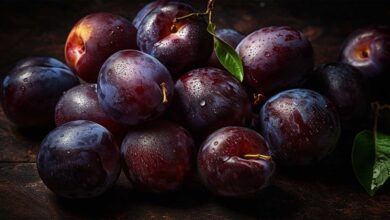By playing with cooking or sprouting techniques, learn how to enjoy beans. Discover these techniques that give swelling, creaminess, firmness and flavor to your tiny seeds.
Absorption cooking is the basis of organic grains: it is suitable for almost all grains, including newly used grains (quinoa, fonio, amaranth, etc.).
If you're already familiar with it, explore other recipes: prepare barley “risotto,” mash buckwheat flakes, roast millet, prepare steamed couscous with fonio, grind wheat into basic fritters… and enjoy!
Basis: Absorption cooking
Perhaps you have already encountered this at your expense? Cooking organic rice in too much boiling water spells disaster: once drained, the grains stick together to form an unappetizing dough. In fact, organic rice is generally not parboiled, unlike regular “non-stick” rice.
To cook organic grains, it is best to use absorption cooking: the grains are first measured by size, then washed and filtered.
The grains are then cooked with an appropriate amount of cold water, which is completely absorbed during cooking. Light salt: All the salt will be absorbed. Cover the pan and bring to a boil, then reduce the heat to low. When there is no more water and small holes appear between the grains, it's done!
To finish your work, let the beans swell for a few more minutes away from the heat, without lifting the lid. Then remove the grains with a fork before serving.
Apart from rice, this cooking method is well suited for bulgur and whole grains: hulled wheat, amaranth, fonio, barley, oats, quinoa, einkorn corn, kamut, wild rice, etc.
Pilaf or risotto, what's the difference?
Here are two other classic rice cooking methods that can be applied to grains or bulgur.
In both cases, we use a frying pan, a little olive oil and some aromatic ingredients (onions, tomato coulis, white wine, broth, herbs, dried mushrooms, etc.)
Start by sweating the onions in a little oil over low heat. Then add the grains, stirring for a few minutes until they “break apart.” When adding cooking liquid and aromatics, the two techniques diverge.
In the PilafPour in all the cold cooking liquid at once. Then we continue cooking as if by absorption.
In the RisottoBring the cooking liquid to a boil in a second pot. Pour it over the scoop of cereal with a ladle, and do not add the liquid until the previous amount has been absorbed. This cooking method without a lid takes a little longer.
In order to obtain smooth and firm grains, cream and Parmesan are generally added at the end of cooking, and can be replaced with white almond puree and a little yeast.
A little extra indulgence: roasting
To give your beans a delicious roasted flavor, consider dry roasting them before cooking. This process also gives better consistency to grains that tend to break down into mash: buckwheat or millet grains will come out better after cooking.
Simply heat the seeds gently, without fat, for five to ten minutes. It is preferable to use a heavy pot over very low heat and stir it regularly.
Meanwhile, bring salted water to a boil in a second pot. Pour very hot water over the seeds and cover to continue simmering. Reduce the cooking time by five minutes from the usual time. Finally, we let the grains swell, cover them, and remove them from the heat.
Good slice
To cook polenta (cornmeal), amaranth or mashed potato flakes, you generally start by measuring and salting the water and then boiling it, before pouring the grains into a fine drizzle, stirring vigorously to avoid lumps.
The preparation thus obtained can then be used in two ways: either served immediately, very hot, for example with fried mushrooms; Pour into the mold.
In fact, when cooled, the polenta and mashed chips freeze into a loaf in the shape of your choice. You can then cut it and brown the slices in an oiled pan or in the oven. You can then accompany them with a nice salad or a colorful vegetable coulis.
Gentle steam
Steaming more than justifies a slightly longer cooking time. In my opinion, this is one of the most delicious ways to cook fonio, kasha (roasted buckwheat), millet or couscous. It also works very well with quinoa and white or semi-wholemeal rice.
To prevent the beans from escaping through the small holes in the steamer basket, first spray them with a small scoop of hot water to make them puff up. Then place them in a basket or steamer over a good amount of boiling water. Cover but do not press to move the grains during cooking.
At the end of cooking, drizzle with a little vegetable oil of your choice and leave to swell for a few more moments away from the heat. You can serve this preparation like couscous, with a plate of cooked vegetables and chickpeas, for example.
And it's all raw?
The grains can be eaten raw by sprouting them. Choose whole, unhulled grains (wheat, barley, spelt, “sprouted” rye, kamut, hulled buckwheat, or quinoa).
Soak the seeds for a few hours, then drain them. Leave them to sprout for about three days, rinsing and straining several times a day, until a sprout appears.
Sprouted quinoa can be mixed with grated vegetables or chopped tomatoes to make a delicious and colorful salad. Sprouted wheat or spelled can be ground to give a rustic touch to bread or crumbs.
By crushing it well, you can make asin bread, pies or biscuits, to be dried at a low temperature.
Read also What is the best way to cook food?
Is special equipment needed?
The beans can be cooked by soaking them in a regular pot, but they may stick. Instead, choose a pot with a thick bottom and a heavy lid: a cast iron casserole dish or a thick-walled stainless steel pot will do.
Another useful tool is a fine mesh strainer. It is used to wash and filter grains, even fine ones, before cooking. This is recommended to remove bitterness from quinoa or excess starch from rice. This tool can also be used to germinate grains if you do not have sprouts.
Finally, use airtight containers to keep your beans safe from insects. If you purchase them from the bulk section of your store, feel free to place raw, dry foods in the refrigerator for 24 hours to kill the moth larvae. You can then store the grains in the cupboard for several months.
Eat cooked or raw grains



نحن نحب سماع آرائكم!
شاركنا رأيك أو اطرح سؤالاً في قسم التعليقات أدناه